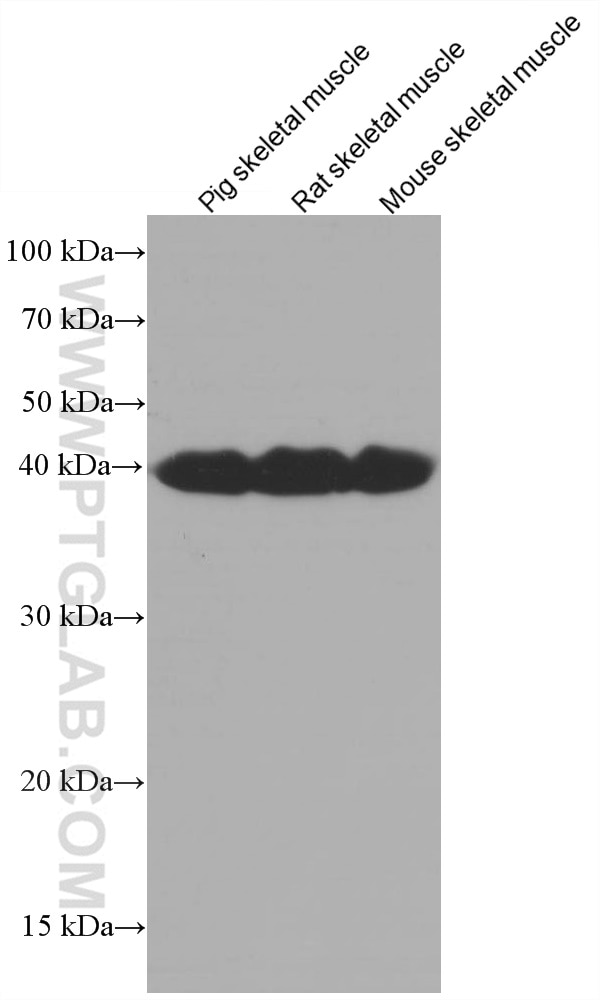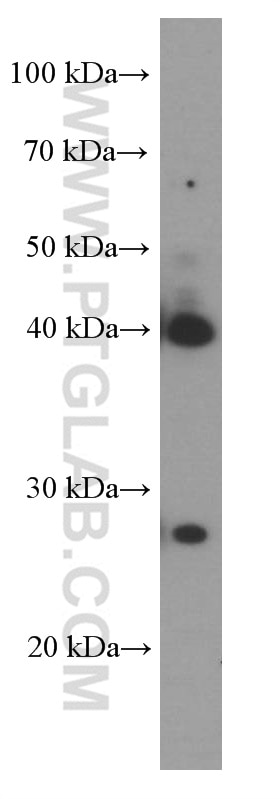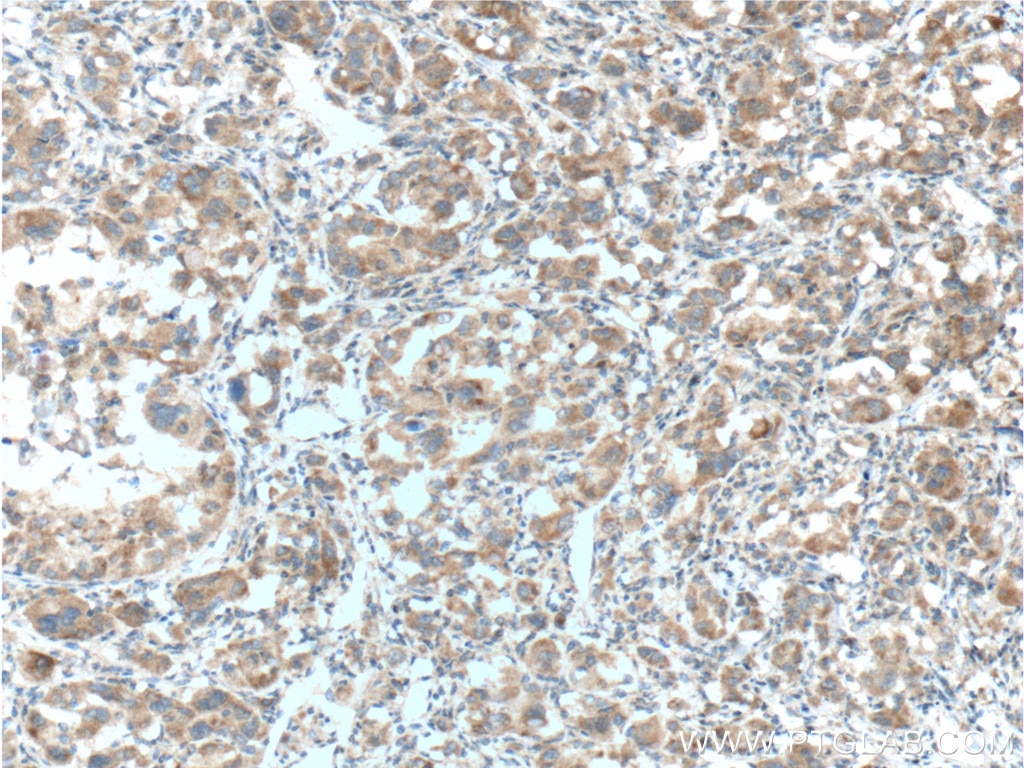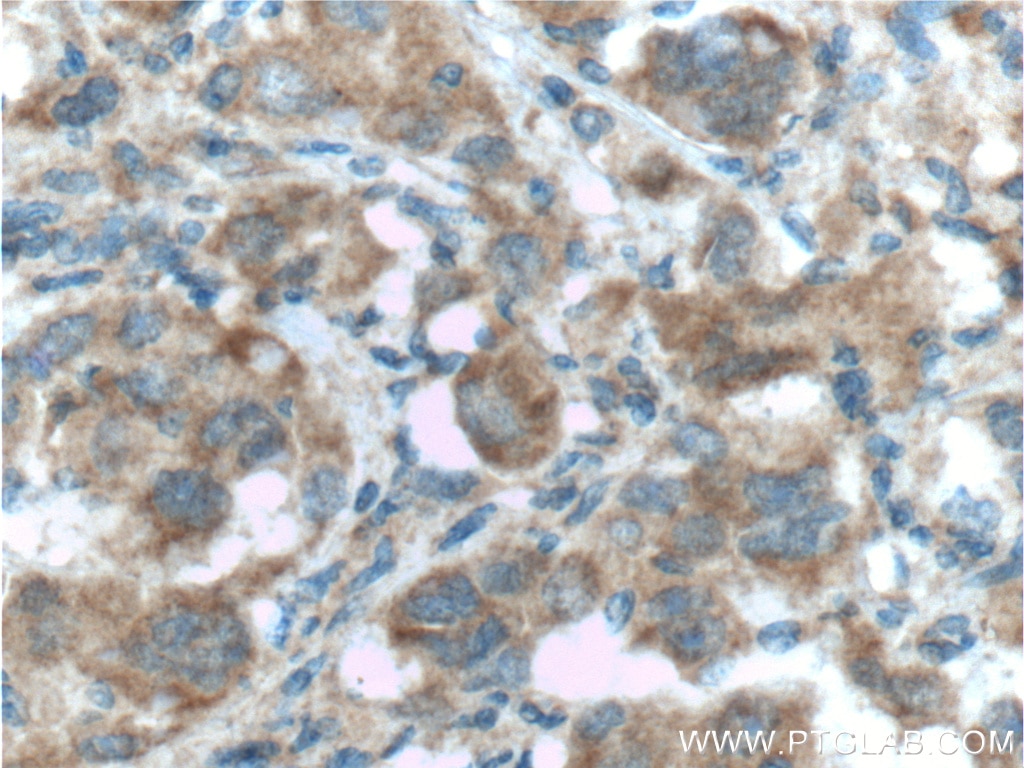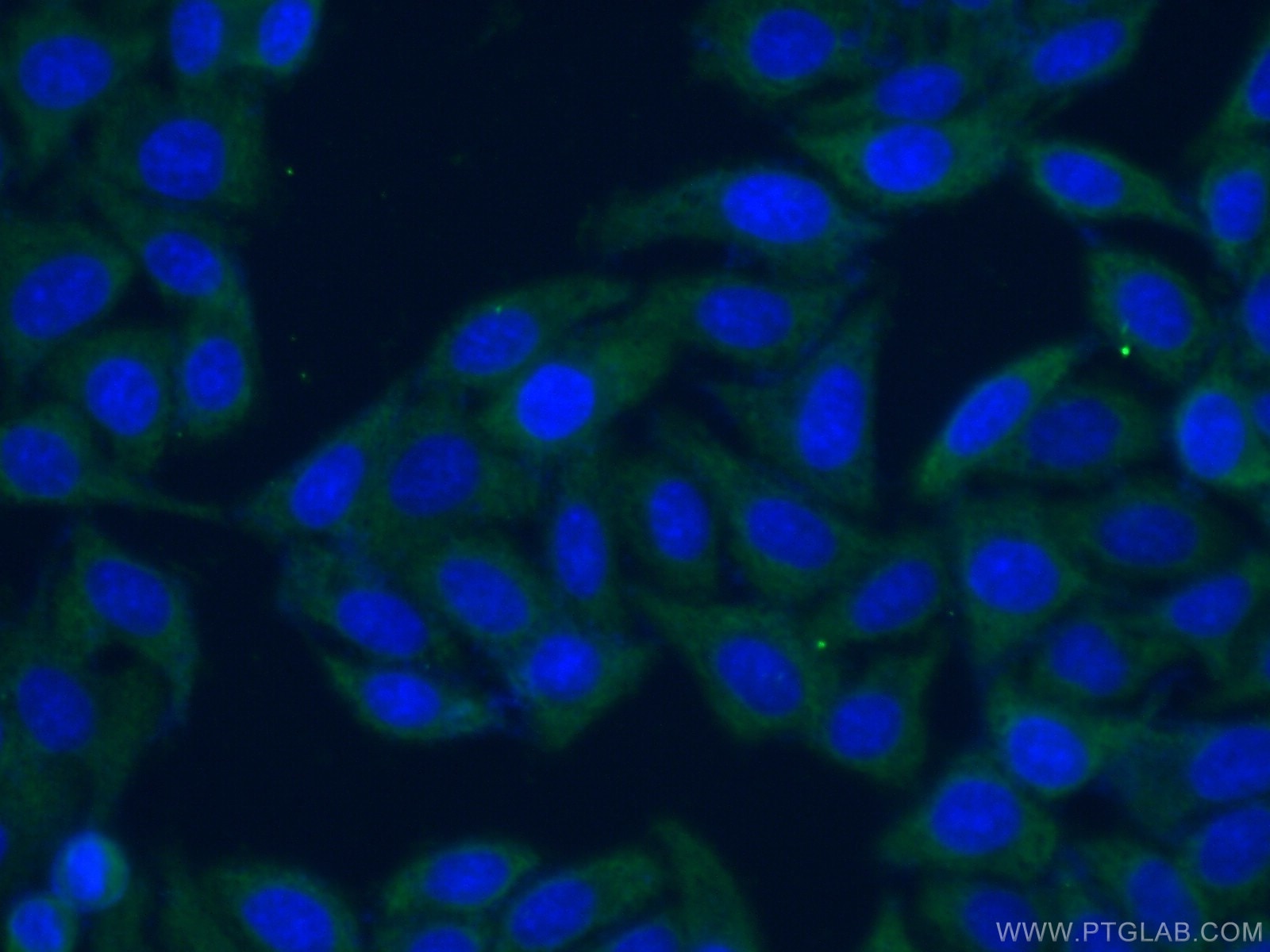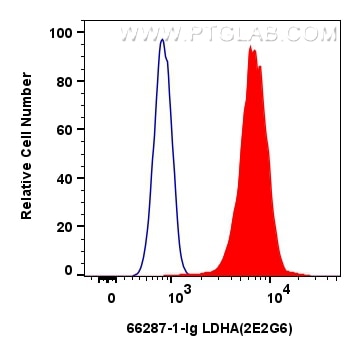- Phare
- Validé par KD/KO
Anticorps Monoclonal anti-LDHA
LDHA Monoclonal Antibody for WB, IHC, IF/ICC, FC (Intra), ELISA
Hôte / Isotype
Mouse / IgG2b
Réactivité testée
Humain, porc, rat, souris
Applications
WB, IHC, IF/ICC, FC (Intra), IP, ELISA
Conjugaison
Non conjugué
CloneNo.
2E2G6
N° de cat : 66287-1-Ig
Synonymes
Galerie de données de validation
Applications testées
| Résultats positifs en WB | tissu hépatique de porc, cellules A431, muscle squelettique de rat, muscle squelettique de souris, tissu de muscle squelettique de porc |
| Résultats positifs en IHC | tissu de cancer du foie humain il est suggéré de démasquer l'antigène avec un tampon de TE buffer pH 9.0; (*) À défaut, 'le démasquage de l'antigène peut être 'effectué avec un tampon citrate pH 6,0. |
| Résultats positifs en IF/ICC | cellules HepG2 |
| Résultats positifs en FC (Intra) | cellules HepG2, |
Dilution recommandée
| Application | Dilution |
|---|---|
| Western Blot (WB) | WB : 1:500-1:3000 |
| Immunohistochimie (IHC) | IHC : 1:100-1:400 |
| Immunofluorescence (IF)/ICC | IF/ICC : 1:50-1:500 |
| Flow Cytometry (FC) (INTRA) | FC (INTRA) : 0.25 ug per 10^6 cells in a 100 µl suspension |
| It is recommended that this reagent should be titrated in each testing system to obtain optimal results. | |
| Sample-dependent, check data in validation data gallery | |
Applications publiées
| KD/KO | See 2 publications below |
| WB | See 23 publications below |
| IHC | See 8 publications below |
| IF | See 8 publications below |
| IP | See 3 publications below |
Informations sur le produit
66287-1-Ig cible LDHA dans les applications de WB, IHC, IF/ICC, FC (Intra), IP, ELISA et montre une réactivité avec des échantillons Humain, porc, rat, souris
| Réactivité | Humain, porc, rat, souris |
| Réactivité citée | rat, Humain, souris |
| Hôte / Isotype | Mouse / IgG2b |
| Clonalité | Monoclonal |
| Type | Anticorps |
| Immunogène | LDHA Protéine recombinante Ag21417 |
| Nom complet | lactate dehydrogenase A |
| Masse moléculaire calculée | 332 aa, 37 kDa |
| Poids moléculaire observé | 32-40 kDa |
| Numéro d’acquisition GenBank | BC067223 |
| Symbole du gène | LDHA |
| Identification du gène (NCBI) | 3939 |
| Conjugaison | Non conjugué |
| Forme | Liquide |
| Méthode de purification | Purification par protéine A |
| Tampon de stockage | PBS with 0.02% sodium azide and 50% glycerol |
| Conditions de stockage | Stocker à -20°C. Stable pendant un an après l'expédition. L'aliquotage n'est pas nécessaire pour le stockage à -20oC Les 20ul contiennent 0,1% de BSA. |
Informations générales
LDHA, also named as LDH-M and NY-REN-59, is an enzyme which catalyzes the inter-conversion of pyruvate and L-lactate with concomitant inter-conversion of NADH and NAD+. LDHA is found in most somatic tissues, though predominantly in muscle tissue and tumours, and belongs to the lactate dehydrogenase family. It has long been known that many human cancers have higher LDHA levels compared to normal tissues. It has also been shown that LDHA plays an important role in the development, invasion and metastasis of malignancies. Mutations in LDHA have been linked to exertional myoglobinuria. LDHA has some isoforms with MW 26-40 kDa.
Protocole
| Product Specific Protocols | |
|---|---|
| WB protocol for LDHA antibody 66287-1-Ig | Download protocol |
| IHC protocol for LDHA antibody 66287-1-Ig | Download protocol |
| IF protocol for LDHA antibody 66287-1-Ig | Download protocol |
| FC protocol for LDHA antibody 66287-1-Ig | Download protocol |
| Standard Protocols | |
|---|---|
| Click here to view our Standard Protocols |
Publications
| Species | Application | Title |
|---|---|---|
Cell Metab Augmentation of scleral glycolysis promotes myopia through histone lactylation | ||
Cell Metab Dual impacts of serine/glycine-free diet in enhancing antitumor immunity and promoting evasion via PD-L1 lactylation | ||
Small A Constant Filgotinib Delivery Adhesive Platform Based on Polyethylene Glycol (PEG) Hydrogel for Accelerating Wound Healing via Restoring Macrophage Mitochondrial Homeostasis | ||
Cell Death Dis FOXQ1 promotes pancreatic cancer cell proliferation, tumor stemness, invasion and metastasis through regulation of LDHA-mediated aerobic glycolysis
| ||
Life Sci Aerobic exercise reduced the amount of CHRONO bound to BMAL1 and ameliorated glucose metabolic dysfunction in skeletal muscle of high-fat diet-fed mice | ||
